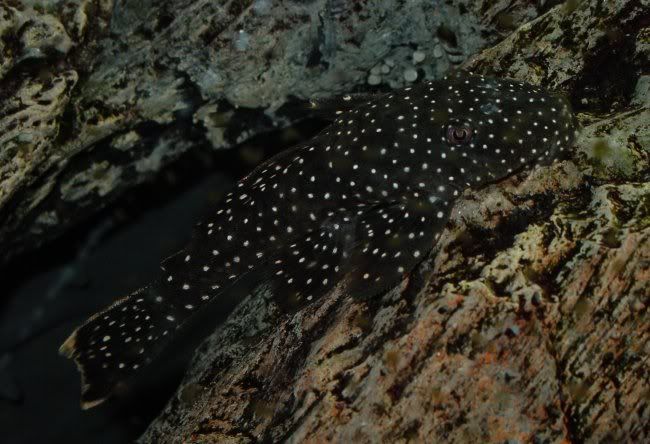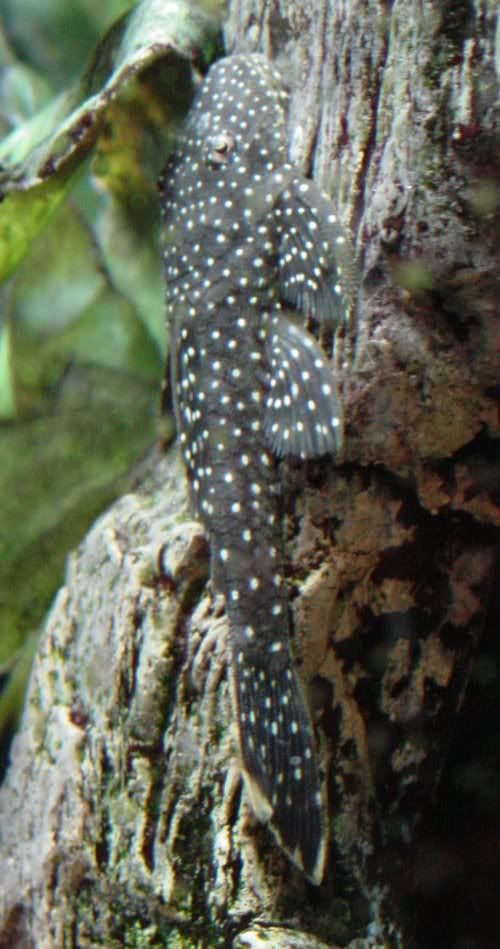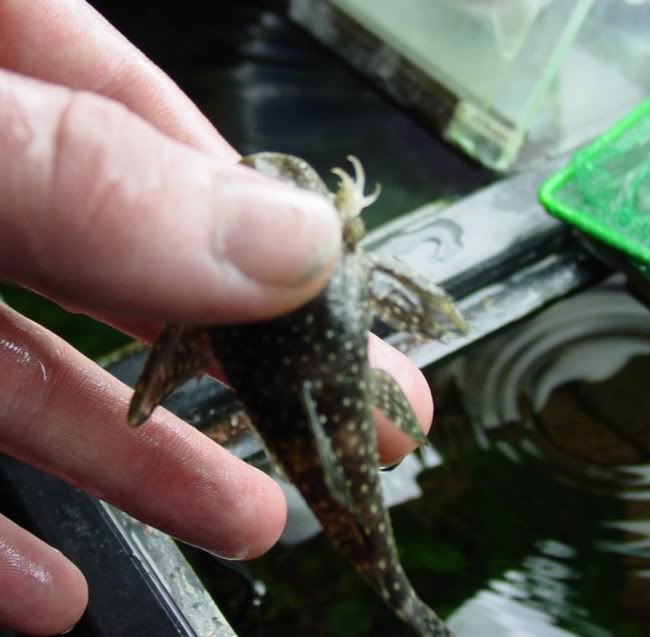I hand caught the fish out of the tank at the store (I've had bad experiences with nets and catfish), and it has some impressive spines it can shoot from under it's operculum...I assume (and I'm probably wrong) that this means it is an Ancistrus species...(only because all my other BN plecos had these "spines" they could extend when threatened)
Let me know what pics of what parts would be helpful in identification...here's a few I snapped this evening (I didn't want to disturb him too much since he's "new" to the tank)









